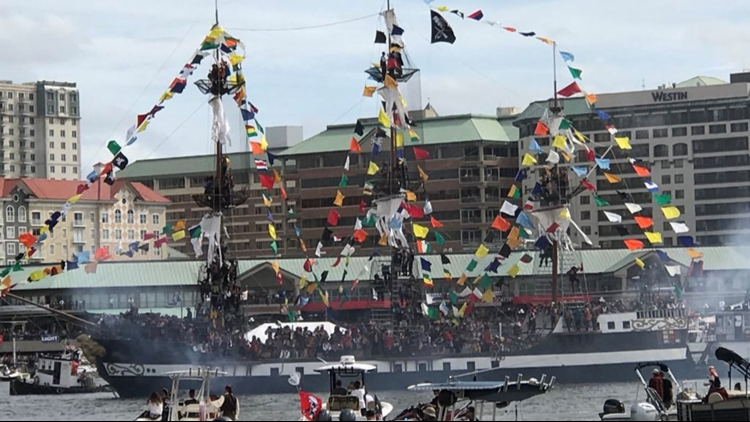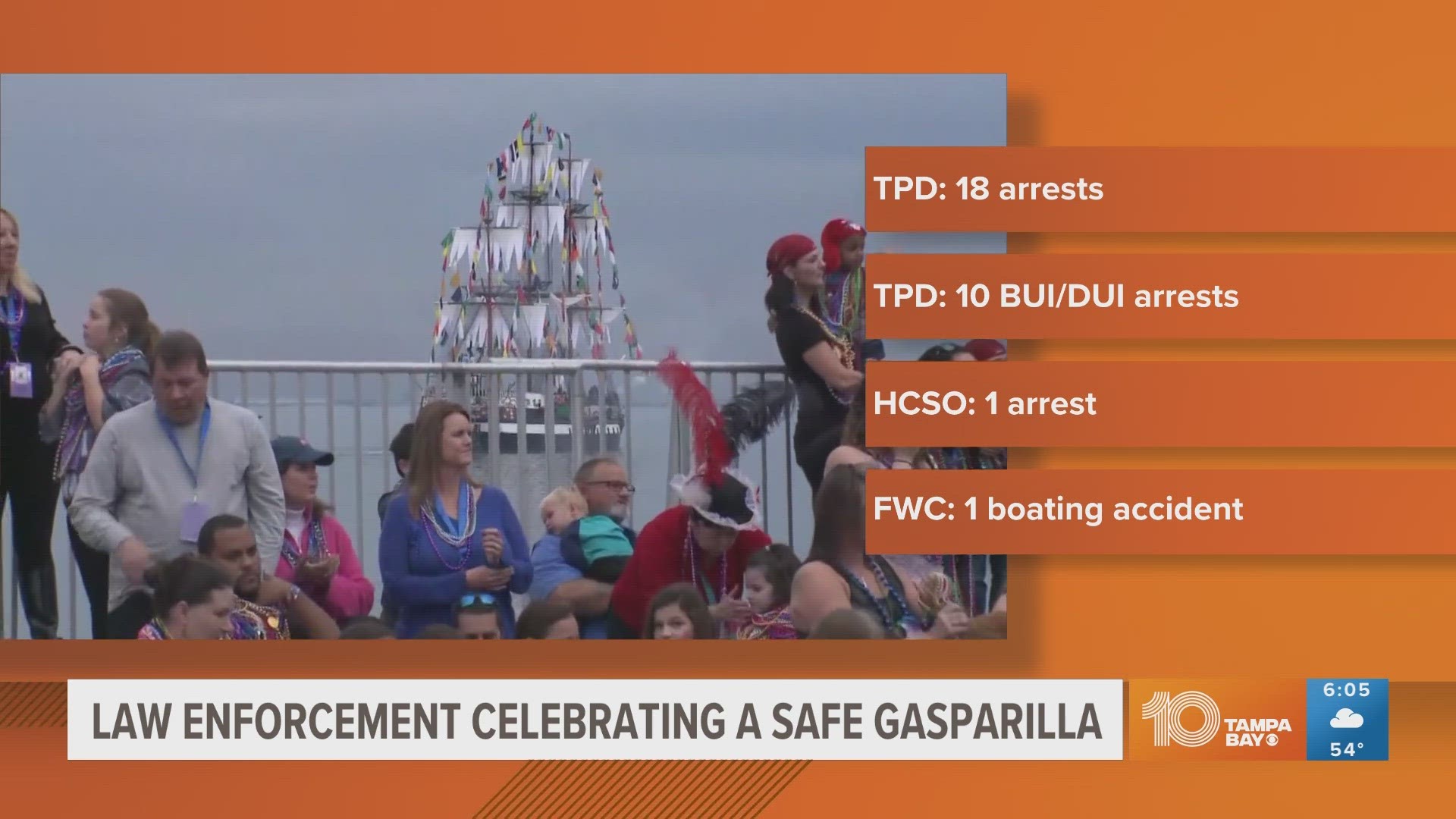Ahoy! Gasparilla season is upon us. Here are 10 things you should know about the pirate fest.
Tampa has been celebrating since 1904
Gasparilla began in 1904 and has been held almost every year since. It was originally celebrated on the second Monday in February before being moved to a Saturday in 1988. This year is the 104th Gasparilla after some years were canceled or interrupted by world wars.
MORE: When is Gasparilla 2019?
The festival is inspired by the legend of a local pirate
The legend of Jose Gaspar is one that’s been told to generations of Tampa natives. The mythical Spanish pirate, “the last of the Buccaneers,” reportedly terrorized the coastal waters of West Florida during the late 18th and early 19th centuries. Gaspar supposedly left a fortune in buried treasure somewhere along the coast near Tampa Bay, but it’s never been found.
The pirates are from dozens of local krewes
There are more than 70 different krewes in Tampa Bay. Similar to the krewes who throw themed parades for Mardi Gras in New Orleans, Tampa Bay krewes range from ones who promote local history and heritage and community service to all-women krewes and ones that operate as charitable organizations. Each krewe has its own motto, mission statement and dress code for Gasparilla. Most have at least one float during the Parade of Pirates, and many keep the Gasparilla spirit going throughout the year through social events.
The pirates use a custom-built ship to invade the city of Tampa
Ye Mystic Krewe, the first and largest krewe of Gasparilla, first used a ship to “capture” the city of Tampa in 1911. In 1937, YMKG owned the Jose Gasparilla I. Then in 1954, the krewe commissioned the building of the world’s only fully-rigged pirate ship, the Jose Gasparilla II. That year also marked the krewe’s 50th anniversary.
The ship is a replica of a West Indiaman-style ship using for merchantman sailing from Europe and Africa to the Caribbean and east coast of the Americas.
In the Gasparilla off-season, the Jose Gasparilla II is docked at the Tarpon Weigh Station near downtown Tampa.
Ye Mystic Krewe demands the key to the city every year
The playful ceremony plays out at city hall when the captain of the krewe demands the mayor surrender the key to the city of Tampa. The event has had different outcomes over the years, but the subsequent pirate parade always happens anyway. The past couple year, Mayor Bob Buckhorn refused to give in to their demands as they marched to loud gunfire and pirate music. The mayor’s threats to repel the invaders were hilariously ignored.
Gasparilla isn’t just one day
It’s almost two months of revelry. Though the most notable event is the invasion and parade of pirates, there is also a children’s parade, a music festival, a film festival, an arts festival, a distance classic run and a night parade. And that’s not counting all the smaller events hosted by local organizations and restaurants.
The Parade of Pirates is one of the largest in the U.S.
The parade along Bayshore Boulevard in Tampa attracts about 500,000 people every year. Along the route, you’ll find tipsy pirates shouting for beads, kids weighed down by the colorful treasures they caught and dozens of floats and marching bands making a raucous party along the waterfront.
Gasparilla has been canceled numerous time
The annual celebration had a bumpy start with varying dates and going on hiatus during World War I and World War II. Then in 1990, Ye Mystic Krewe and the city planned to move the parade up a few weeks to coincide with Super Bowl XXV at then-Tampa Stadium. The city and the NFL pressured the krewe to finally let in African-American members, but the organization refused and canceled Gasparilla. Later in 1991, the krewe began accepting African-American members and Gasparilla returned in 1992.
The currency is beads
Like most parades, revelers jump and shout for those necklaces of colorful plastic balls like they’re worth millions. Last year, the Tampa Bay Times reported that some Gasparilla krewes spend $10,000 to $20,000 on beads to wear themselves and throw during the parade. The value of all the beads used during the parade is about $1 million.
There are plenty of family-friendly events
The weekend before the Parade of Pirates, Bayshore Boulevard hosts the children’s parade and preschooler stroll for little swashbucklers. The Gasparilla Distance Classic, a festival of the arts, music festival and film festival also have family-friendly elements.
►Make it easy to keep up-to-date with more stories like this. Download the 10News app now.
Have a news tip? Email desk@wtsp.com, or visit our Facebook page or Twitter feed.



